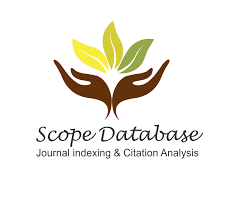Details
Artificial Intelligence Based Therapy for Speech-Language Childhood Assimilation
Henna Abdul Azeez
Data Scientist, Qartelz India Private Limited
S Deepanjali
Information Technology, SRM University, Chennai
Download PDF http://doi.org/10.37648/ijrst.v13i04.006
http://doi.org/10.37648/ijrst.v13i04.006
Abstract
A communication clutter that interferes in a child’s throughout performance is labeled as Speech-Language disorder which makes it arduous for a standard conversation. Speech impairment and language impairment are the two types of childhood assimilation classified. Speech impairment is a constraint in which the excellence in producing speech sounds is undermined. The predicament in catching others' replique montre de luxe ideas, thoughts and feelings is relegated as Receptive Language Impairment and the distress in expressing one’s own idea is delineated as Expressive Language Impairment. The above two of these impediments are congregated together and entitled as Language Impairment. The cardinal challenging hurdle for the kids with impairment is their inadequacy in social interaction. As an outcome, there is a pivotal prerequisite to establish NLP applications which support the disabled children by tracking the impediment at a prior phase. The errand of this article is to give a therapy for the kids who suffer from both language and speech impairment using NLP techniques. An algorithm, which automatically analyzes the child’s intensity of impairment based on their age group by considering various semantic and structural attributes into account is designed. . The model also classifies the type of disorder and the intensity of the impairment afflicted and thereby providing a specific and systematic training to the children to overcome their ailment.
Keywords: speech impairment; expressive language impairment; receptive language impairment; therapy; artificial intelligence; natural language processing
References
- American Speech-Language Hearing Association. Definitions of communication disorders and variations. ASHA. 1993;35(Suppl 10):40–41. [PubMed]Wei Zheng, Dale F. Mclerran, Betsy Rolland, Xi- anglan Zhang, Manami Inoue, Keitaro Matsuo, Jiang He, Prakash Chandra Gupta, Kunnambath Ramadas, and Shoichiro Tsugane, “Association between body- mass index and risk of death in more than 1 million asians,†New England Journal of Medicine, vol. 364, no. 8, pp. 719–29, 2011
- Bates E. Commentary: Comprehension and production in early language development. Monogr Soc Res Child Dev. 1993;58:222–242. [PubMed]
- Skelton H, Rosenbaum P. Disability and development: integrating the concepts. Hamilton, CanChild Centre for Childhood Disability Research, 2010.
- Fails, J. A., Druin, A., & Guha, M. L. (2010). Mobile Collaboration: Collaboratively Reading and Creating Children’s Stories on Mobile Devices. The 9th International Conference on Interaction Design and Children, 20-2.
- Lynch EW, Hanson MJ, eds. Developing cross-cultural competence: a guide for working with children and their families, 3rd ed. Baltimore, Paul H. Brookes Publishing Co, 2004.
- UNESCO Policy Brief on Early Childhood. Inclusion of Children with Disabilities: The Early Childhood Imperative. N° 46 / April – June 2009 /REV/. (http://unesdoc.unesco.org/images/0018/001831/ 183156e.pdf, accessed 25 January 2012).
- Glascoe FP. The value of parents' concerns to detect and address developmental and behavioral problems. J Paediatr Child Health. 1999;35:1–8. [PubMed]
- Werner EE. Protective factors and individual resilience. In: Shonkoff JP, Meisels SJ, eds. Handbook of Early Childhood Intervention, 2nd ed. Cambridge University Press, 2000:94-114.
- H. Korhonen and E. M. I. Koivisto, “Mobile Entertainment: Playability heuristics for Mobile Gamesâ€, Proc. of MobileHCI, ACM Press, 2006, 9-16.
- Status of the Convention on the Rights of the Child: report of the Secretary-General. In: Sixty-fifth General Assembly of the United Nations, New York, 2 August 2010. New York, United Nations.
- Markowitz J, Carlson E, Frey W, et al. Preschoolers' Characteristics, Services, and Results: Wave 1 Overview Report from the Pre- Elementary Education Longitudinal Study (PEELS) Rockville, Md: Westat; 2006.
- Shonkoff JP, Phillips DA. From Neurons to Neighborhoods: The Science of Early Childhood Development. Washington, DC: National Academies Press; 2000.
- Sices L, Feudtner C, Meaney M. Epigenetics and biological definition of gene x environment interactions. Child Development, 2010, 81(1):41-79.











